Tennis March Madness: The Top 9 Who Won Back-To-Back Titles at Indian Wells & Miami
March Madness has its own special setting for tennis. Prior to the start of the dusty clay-court season in April, the tour swings through the States landing first in the California desert at a venue called Indian Wells before proceeding to Miami and the Sony Ericsson Open.
Both tournaments field players for a Masters 1000 for the men and a premiere mandatory event for the ladies with 96 participants in the field. Play extends over 10 days, which is unusual for a Masters Series tournament.
The BNP Paribas Open held at Indian Wells will begin March 8, 2012, concluding on March 18. The Sony Ericsson Open will follow, starting on March 21, 2012, and ending on April 1.
For the men, multiple winners of each tournament remain relatively rare when you consider the number of participants each year.
But the true piece de resistance of the March Madness swing through Indian Wells and Miami is winning both titles, back-to-back in the same year. Surviving to win one of these tournaments is a testament to a player’s endurance, but to win both in the same season is one of the most difficult doubles of the tennis tour.
Only nine players, both men and women, have accomplished this rare feat to date. Only one man and one woman claimed the double more than once—Roger Federer and Steffi Graf.
Indian Wells
Eight men have won Indian Wells more than once.
Boris Becker (1987-1988), Jim Courier (1991, 1993), Michael Chang (1992, 1996-1997), Pete Sampras (1994-1995), Lleyton Hewitt (2002-2003), Roger Federer (2004-2006), Rafael Nadal (2007, 2009) and Novak Djokovic (2008, 2011) all captured the trophy at Indian Wells more than one time.
Only Federer and Chang can claim three titles—so far.
Seven ladies including Martina Navratilova (1990-1991), Mary Jo Fernandez (1993, 1995), Steffi Graf (1994,1996), Lindsay Davenport (1997, 2000), Serena Williams (1999, 2001), Daniela Hantuchova (2002, 2007), and Kim Clijsters (2003, 2005) have won the championship at Indian Wells.
None of the ladies have managed to win the tournament more than twice.
Key Biscayne/Miami
Only six men have won the championship in Miami more than once, although Andre Agassi managed six titles during his long, illustrious career.
Ivan Lendl (1986, 1989), Andre Agassi (1990, 1995-1996, 2001-2003), Sampras (1993-1994, 2000), Federer (2005-2006), Andy Roddick (2004, 2010), and Djokovic (2007, 2011) have all brought home multiple titles.
By the same token, eight women have won the championship in Miami more than once with Graf and Serena Williams bringing home the most titles with five each.
Graf (1987-1988, 1994-1996), Monica Seles (1990-1991), Arantxa Sanchez (1992-1993), Martina Hingis (1997, 2000), Venus Williams (1998-1999, 2001), Serena Williams (2002-2004, 2007-2008), Clijsters (2005, 2010) and Victoria Azarenka (2009, 2011) represent the some of the best of the best in the women’s game.
But only nine players in the history of these tournaments have won both respective championships in the same year. They follow.
Jim Courier 1991
Jim Courier was just coming into his own in 1991. He used his double wins at Indian Wells and Key Biscayne/Miami to help catapult his standing from world No. 23 to world No. 2 by the end of the year.
Eventually Courier would reach the No. 1 ranking the week of April 13, 1992.
His win over the No. 5 ranked Frenchman, Guy Forget, at Indian Wells gave Courier the second singles title of his career. It was not, however, an easy day at the office. Courier spent three-and-a-half hours on court, trying to remain positive and settled until the last ball was struck.
The American defeated the Frenchman 4-6, 6-3, 4-6, 6-3, 7-6. Until that win, Courier had not managed to make a final since his win in Basel in 1989. This first step at Indian Wells in 1991 was huge.
Even bigger was the following win in Key Biscayne/Miami where Courier triumphed to add another trophy to his mantle. After defeating Stefan Edberg, the No. 1 player in the world, American David Wheaton met Courier in the final of the tournament—then known as the Lipton Championships.
Courier’s win over Wheaton in the final 4-6, 6-4, 6-3 saw the American land in the Top 10 in men’s tennis for the first time in his career. The usual best of five format was abbreviated that year to accommodate televised coverage on ABC.
Courier would go on to win his first Slam title, the 1991 French Open, later that spring.
Michael Chang 1992
Chang won American hearts when at the age of 17 years and three months, he won the 1989 French Open Championship. It was an amazing run which included defeating Ivan Lendl in the fourth round in one of the most dramatic matches in that tournament’s history.
By overcoming cramps and serving underhanded, Chang defeated a totally flummoxed Lendl to advance eventually to the final. There the American defeated Stefan Edberg becoming the first American to win the French Open since Tony Trabert accomplished it in 1955. The win eventually led Chang into the men’s Top 10 as a teenager.
In 1992, however, the year after Jim Courier first accomplished it, Chang also won the “March Madness” double in men’s tennis by winning back-to-back titles at Indian Wells and Miami.
The Indian Wells tournament was known as the Newsweek Champions Cup in 1992. Jim Courier was the defending champion, but he lost in the third round to unseeded Russian Andrei Chesnokov who swept seeded players aside all the way to the final to meet American Chang.
Chesnokov was no match for Chang that afternoon. In the best of five final, Chang defeated the Russian in straight sets 6-3, 6-4, 7-5.
In all, Chang would win the title at Indian Wells three times, tied with Roger Federer for that ATP record.
Next up in Miami, Chang, seeded No. 6, had to face the No. 1 seed Courier in the semifinals. This was after Chang had upset Pete Sampras in the quarterfinals. Courier, however, could not stop Chang that day, losing 2-6, 4-6. This cost Courier his No. 1 ranking and sent Chang into his second consecutive final where he would face Argentine Alberto Mancini.
Chang played constant and persistent tennis all afternoon, breaking Mancini in the final game of both sets—winning the match 7-5, 7-5. The win was Chang’s fourth in four consecutive finals, extending his winning streak to 12 matches.
Players generally treated the Lipton International Players Championship (later known as the Sony Ericsson Open) as a mini Grand Slam event.
Pete Sampras 1994
Pete Sampras won the tournament held at Indian Wells back-to-back in 1994-1995. But only in 1994 did the American win at both Indian Wells and Key Biscayne/Miami.
Seeded No. 1 at the Newsweek Champions Cup in 1994, Sampras advanced to the final to face Czech Petr Korda after defeating Thomas Muster in the quarterfinals and Stefan Edberg in the semifinals.
Defeating Korda was no easy task. Sampras woke up with a very upset stomach and thought he might have to default. The match extended to five sets with Sampras finally putting the Czech away in the fifth set, winning 4-6, 6-3, 3-6, 6-3, 6-2.
It turned out that Korda would soon face Sampras again at the 1994 Lipton International tournament in Key Biscayne, and this time in the quarterfinals Sampras’ serve stunned the Czech, leaving him few return options.
Sampras dispatched Korda 6-2, 3-6, 6-1, allowing the American to move onto the semifinals where he faced former world No. 1 Jim Courier. While Courier fought hard, he could not stop Sampras as the No. 1 seed advanced to the final with a 6-4, 7-6 victory.
In the final, Sampras faced his old nemesis: fellow American Andre Agassi. In a best of three final, Sampras prevailed 5-7, 6-3, 6-3 and won his second title at Key Biscayne and back-to-back Masters titles in 1994.
Sampras was off to a great start in 1994 with a 23-2 match record, winning his fourth title of the year, including his first Australian Open trophy.
The American would go on to capture his second consecutive Wimbledon title in 1994 and end the year ranked No. 1.
Marcelo Rios 1998
Born in Chile, Marcelo Rios rose to the No. 1 ranking on March 30, 1998, holding on for six weeks before relinquishing the top spot back to Pete Sampras.
In the Open Era, Rios is the only man to have held the No. 1 ranking without ever winning a Grand Slam tournament.
Part of the reason he rose to No. 1 was because in 1998 he managed to win ATP Masters tournaments at both Indian Wells and Key Biscayne/Miami.
Seeded No. 7 at the Newsweek Champions Cup (Indian Wells), Rios upset No. 2 seed Petr Korda in the quarterfinals, wild card Jan-Michael Gambill in the semifinals and No. 6 seed Brit Greg Rusedski in the final.
The final was a contrast in style with the serve-and-volley play of 6’4” Rusedski pitted against the 5’9” baseline prowess of Rios. The Chilean won 6-3, 6-7, 7-6, 6-4—losing only one set the whole tournament. With well-timed lobs and pin-point accurate passing shots, Rios won the day and the tournament.
Coached by Larry Stefanki, Rios felt the win proved that a little guy was ready to contend for tennis’ top spot.
In Miami, Rios was seeded No. 3 behind No. 2 Petr Korda and No. 1 Pete Sampras. While Korda and Sampras were dispatched in the fourth and third rounds respectively, Rios slugged his way through the draw once again to survive to the final where he would face the American Andre Agassi, seeded No. 29.
In the end, Agassi was no match for the little Chilean, who for all practical purposes dismantled Agassi’s game that afternoon.
Instead of a five-set classic, Agassi was sent to the showers in straight sets. With his win, Rios replaced Sampras as No. 1 in the world.
Rios was not around long, giving up the game in 2004 at age 27, suffering from back problems that could not be conquered even with surgery. While he was around, however, Rios never failed to add a large measure of excitement to the proceedings.
Andre Agassi 2001
American Andre Agassi played tennis for 20 years and had, in essence, two careers.
Turning pro in 1986, Agassi made his way into the Top 10 of men’s tennis in June of 1988. He remained in the Top 10 fairly consistently until being awarded the No. 1 ranking on April 10, 1995.
Starting in 1997, however, Agassi saw his ranking plummet all the way to No. 141 before the man from Las Vegas began to turn around his personal and professional life.
By August of 1998, Agassi had worked his way back into the Top 10 again, achieving the No. 1 ranking for the second time in July of 1999.
Known as one of the game’s greatest returners, Agassi captured eight Grand Slam singles titles including a career Grand Slam, having won a singles title at each of the major venues. Agassi was the last American to win the French Open and the Australian championships.
During his long career, Agassi won 17 Masters titles, six of them at the Key Biscayne/Miami tournament which underwent several name changes during Agassi’s tenure on court. But he only won once at Indian Wells and that produced a March double for the former world No. 1 in 2001.
Known as the Indian Wells Masters in 2001, Agassi entered the tournament seeded No. 4 behind No. 3 Pete Sampras, No. 2 Marat Safin and No. 1 Gustavo Kuerten. He met and defeated Aussie Lleyton Hewitt in the semifinals 6-4, 3-6, 6-4 which sent Agassi into the final against fellow American Sampras. At that time, the final was still the best of five format.
In the final, Agassi defeated his nemesis Sampras in straight sets 7-6, 7-5, 6-1.
Following the Indian Wells Masters, Agassi was seeded No. 3 at the 2001 Ericsson Open behind the No. 2 seed, Marat Safin, who lost in the second round, and the No. 1 seed, Gustavo Kuerten, who lost in the third round.
Agassi defeated unseeded Ivan Ljubicic in the quarterfinals, the No. 8 seed Patrick Rafter in the semifinals and No. 19 Jan-Michael Gambill in the final 7-6, 6-1, 6-0.
Agassi struck the ball amazingly well—cleanly and seemingly without effort as Gambill attempted to keep pace. At the time, Agassi was almost 31 years of age and perhaps playing better tennis than ever.
The American would win in Miami for two more years but would never again take a title at Indian Wells.
Kim Clijsters 2005
Although Kim Clijsters reached the No. 1 ranking in 2003, she did not claim her first major until 2005 when she won the U.S. Open in Flushing Meadows.
Prior to that auspicious occasion, however, Clijsters became the second of two women to win a double at the Indian Wells tournament—then known as the Pacific Life Open—followed by a win at the NASDAQ-100 Open in Miami.
Ironically, Clijsters entered the tournament at Indian Wells in 2005 unseeded with a WTA ranking of 133 after being out for several months with an injury.
Clijsters marched through the early part of the draw without dropping a set. American Lindsay Davenport, Frenchwoman Amelie Mauresmo and Russian Maria Sharapova were seeded 1, 2 and 3 respectively for the tournament.
Clijsters defeated Conchita Martinez in the quarterfinals 6-1, 3-6, 6-2 followed by a win over the No. 4 seed Elena Dementieva in the semifinals 6-4, 6-2. In the finals Clijsters defeated the No. 1 seed Davenport 6-4, 4-6, 6-2 to claim the title.
Again unseeded, the Belgian Clijsters won the NASDAQ-100 Open to claim her second Tier Title in a row. Mauresmo was the No. 1 seed followed by Sharapova and Serena Williams, seeded 2 and 3 respectively.
In Miami, Clijsters overcame all competitors in straight sets including the No. 4 seed Dementieva in the quarterfinals 6-2, 6-1 and the No. 1 seed Mauresmo in the semifinals 6-1, 6-0.
That propelled Clijsters into the 2005 NASDAQ-100 final against the No. 2 seed Sharapova. Like all before her, Sharapova fell in straight sets but put up more resistance than those preceding her. Clijsters won the final 6-3, 7-5.
Winning the double secured Clijsters a Top 20 ranking once again. Clijsters would go on to win her first Grand Slam title in New York—the 2005 U.S. Open.
Clijsters briefly retired from the tour in 2007 before returning to action full time in 2009. Still active and hoping to improve her rankings once again, perhaps Clijsters can make another run through Indian Wells and Miami just as she did in 2005.
Novak Djokovic 2011
Novak Djokovic, currently the No. 1 player in the world, will be defending at both Indian Wells and Miami in 2012 since he is the reigning champion of both Masters Series tournaments.
Winning the titles in 2011 added to the Serb’s amazing season which eventually led to a 43-match win streak, ending when Djokovic lost his semifinal match to Roger Federer at the 2011 French Open Championships.
Although Djokovic won at Indian Wells and Miami twice during his career, in 2011, he became the seventh man in the long history of these Masters events to win both in the same year.
Coming into the tournament in 2011, Djokovic was the No. 3 seed. Rafael Nadal and Roger Federer were seeded No. 1 and No. 2 respectively. Until the Serb met Federer in the semifinals, he did not drop a set on his way to the final.
Djokovic overcame Federer 6-3, 3-6, 6-2, sending the Serb into the final against the No. 1 seed Nadal. Once Djokovic dispatched Nadal 4-6, 6-3, 6-2 in the final, the Serb overtook Federer to become the No. 2 player in the world. Djokovic also initiated a pattern of meeting and defeating Nadal in their next six finals.
The following week, the tour moved onto Miami and the 2011 Sony Ericsson Open where Djokovic was the No. 2 seed. Once again, Djokovic moved relatively unimpeded through the draw all the way to the final where he once again met and defeated Nadal.
The No. 1 seed, who had defeated Federer in straight sets in the semifinals, put up a good fight, but Nadal could not stop Djokovic from winning the Sony Ericsson Open for the second time.
Djokovic took over the No. 1 spot on July 4, 2011. During the 2011 season the Serb won three Grand Slam titles, five Masters Series titles (a new record) in all 10 ATP tournaments. The question on everyone’s lips is: Can Djokovic compile another season like last year?
To date he has won the 2012 Australian Open and the world No. 1 competed this past week in Dubai as the No. 1 seed and defending champion. Djokovic, however, had not played since Melbourne, so Dubai proved to be a real test of his mental and physical strength heading into Indian Wells. He failed to make the final losing to Scot Andy Murray in the semifinals. Could this be a sign of things to come?
Another double at the BNP Paribas Open at Indian Wells and the Sony Ericsson Open in Miami would tie Djokovic with Federer, who remains to date the only man to complete the double win twice in his career.
Steffi Graf 1994 and 1996: The First Double-Double
Of the nine players who have won the double at Indian Wells and Miami, only two have done it twice—Roger Federer and Steffi Graf.
Graf, who won the tournament at Indian Wells in 1994 and 1996, also won the tournament in Key Biscayne/Miami five times in 1987-1989, 1994-1996. That gave the former world No. 1 the double for years 1994 and 1996.
The tournament at Indian Wells was known as the Evert Cup in 1994. Graf entered the tournament as the No. 1 seed, followed by Americans Mary Jo Fernandez at No. 2 and Lindsay Davenport at No. 3.
The world No. 1 stampeded through the draw, never dropping a set. Graf defeated Iva Majoli 6-4, 6-1 in the semifinals and South African Amanda Coetzer 6-0, 6-4 in the final. The win gave Graf her first title at Indian Wells.
At the 1994 Lipton International Players Championships (Key Biscayne/Miami), Graf came into the tournament as the top seed.
She advanced to the finals without dropping a set, overcoming the fifth seed Kimiko Date 6-1, 6-1 in the quarterfinals followed by the seventh seed Davenport 6-0, 7-6 in the semifinals. In the finals Graf faced the No. 9 seed Natasha Zvereva of Belarus.
While Zvereva was able to win one set, Graf won the match 4-6, 6-1, 6-2 to win her third title at this event and her first Indian Wells-Miami double.
In 1996 the tournament at Indian Wells was known as the State Farm Evert Cup, as the corporate sponsors continued to change. Graf was once again the No. 1 seed coming into the tournament with Conchita Martinez seeded No. 2.
Graf advanced without too much difficulty until the semifinals where she faced the No. 7 seed Davenport. This match turned into a brutal battle until Graf finally escaped with a win 6-7, 7-6, 6-4.
Then the German had to face another powerful opponent in the final who proved equally as tough. Graf finally prevailed over the No. 2 seed Conchita Martinez 7-6, 7-6.
After escaping with a win at Indian Wells, Graf had to turn around quickly to defend her 1995 title at the Lipton International in Key Biscayne/Miami. Seeded No. 1, Graf could anticipate some true competition from No. 2 seed Arantxa Sanchez, No. 3 seed Anke Huber or No. 4 Gabriela Sabatini.
But the other top seeds folded before reaching the final, leaving Graf to face Davenport again in the semifinals where the No. 1 seed won in straight sets 6-4, 6-4. In the final Graf turned away American Chanda Rubin 6-1, 6-3 to win her last Lipton Open as well as her last March double.
Graf’s accomplishments on the tennis court are staggering, including 22 Grand Slam singles titles, a calendar year Golden Slam in 1988 winning all four majors plus an Olympic gold medal. Graf held the No. 1 ranking for 377 weeks—longer than any other player, male or female.
She remains one of two to win the double twice at Indian Wells and Miami—the only woman ever to achieve it.
Roger Federer 2005-2006: The Second Double-Double
Roger Federer managed to win both Indian Wells and Miami in back-to-back years, making him the only player ever to accomplish this feat—a March double-double—in the Open Era.
Actually Federer entered the Pacific Life Open (as it was then known) in 2005 as the defending champion, having won the tournament in 2004. In 2005, however, Federer came in as the No. 1 seed. Aussie Lleyton Hewitt was the second seed, American Andy Roddick was the third and the enigmatic Russian Marat Safin was seeded No. 4.
Federer advanced through the draw without dropping a set, defeating Argentine Guillermo Canas 6-3, 6-1 in the semifinals and Lleyton Hewitt in the final 6-2, 6-4, 6-4. The final was still a best of five format. Canas, of course, would become a significant person in Federer’s career when the Argentine would defeat Federer in the opening round at both Indian Wells and Miami in 2007.
In one of the more interesting tournaments in Miami—this one being the 2005 NASDAQ-100 Open—Federer would face a relative newcomer in the final, a very young Rafael Nadal seeded No. 29 for this tournament.
Nadal, of course, had defeated Federer the previous year in Miami during the third round. It was a big upset for Federer, who had just climbed to the world No. 1 ranking.
This year, however, Federer would get a good view of the future from his soon-to-be constant rival. Having dismissed Tim Henman in straight sets during the quarterfinals and Andre Agassi in two in the semifinals, Federer found himself in a war with the Spaniard for the championship.
Nadal sprinted out to a two-set lead, but Federer stormed back winning 2-6, 6-7, 7-6, 6-3, 6-1 as Nadal ran out of gas.
By 2006, Federer was again the No. 1 seed at the Pacific Life Open (Indian Wells) and Nadal was the No. 2 seed as he would remain for the next two-and-a-half years. Both men survived to the quarterfinals where Federer scored a victory over Croat Ivan Ljubicic 6-2, 6-3, while Nadal dispatched Cypriot Marcos Baghdatis 7-5, 6-0 to advance to the semifinals.
There Nadal lost to American James Blake 7-5, 6-3 while Federer won his semifinal match over Paradorn Srichaphan of Thailand 6-2, 6-3. In the final the Swiss dismissed Blake in straight sets 7-5, 6-3, 6-0.
At the 2006 NASDAQ-100, Federer once more came in as the No. 1 seed with Nadal the second seed. But Nadal was upset in the second round by countryman Carlos Moya, never really getting his grip on the match.
Federer defeated James Blake in the quarterfinals 7-6, 6-4 and Spaniard David Ferrer in the semifinals 6-1, 6-4. In the finals Federer would face Ljubicic—coming away with a 7-6, 7-6, 7-6 victory in a very exciting match.
Federer has won 71 ATP singles titles including 16 Grand Slam singles titles. He held the No. 1 ranking for a consecutive 237 weeks—a modern record.
Federer won two Sony Ericsson titles in 2005-2006 and has never made his way back to another final in Miami. He won three titles at Indian Wells 2004-2006, never making a final again.
But in the process he won back-to-back doubles at Indian Wells and Miami. No man has accomplished it again—at least, not yet.
Only Djokovic has the opportunity to equal the double-double in 2012…
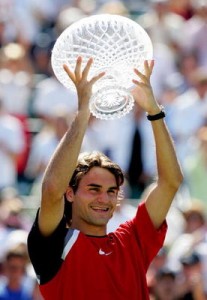
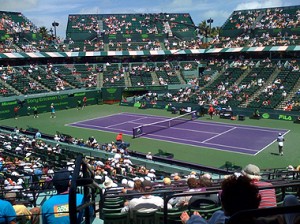
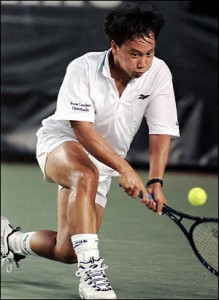
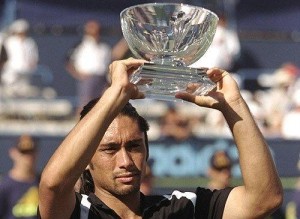
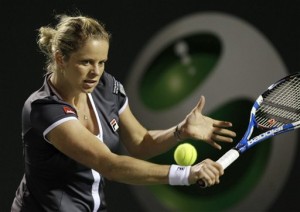
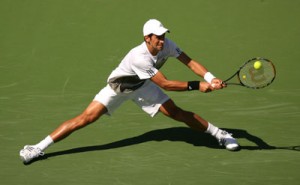
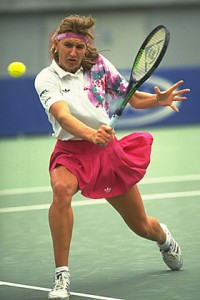
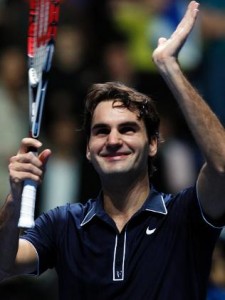
Hello to all I cannot comprehend the method to add your web site in my rss reader. Assist me, please 985806
Wow! Thank you! I always wanted to write on my web site something like that. Can I contain a portion of your post to my site? 688184
really like your imagination!!!! wonderful function!! oh yeah.. cool photography too. 737755
Verry nice blog and useful! I think i will come back one day! Sport-Direct
Magnificent site. A lot of useful information here. I am sending it to a few buddies ans additionally sharing in delicious. And certainly, thanks for your sweat!
That is the precise weblog for anybody who wants to search out out about this topic. You realize so much its nearly onerous to argue with you (not that I truly would want…HaHa). You undoubtedly put a new spin on a subject thats been written about for years. Nice stuff, simply nice!
I like this web blog so much, saved to bookmarks. “Nostalgia isn’t what it used to be.” by Peter De Vries.
No more s . All posts of this qaulity from now on 478646
What a nice post it is!
Very Nice Post!
naturally like your web site but you need to check the spelling on several of your posts. Several of them are rife with spelling problems and I to find it very bothersome to inform the reality nevertheless I will definitely come again again.
The Twitter application page will open. This really is excellent if you
I was more than happy to search out this net-site.I needed to thanks in your time for this glorious read!! I positively having fun with every little little bit of it and I have you bookmarked to check out new stuff you weblog post.
If you approve our comments, we intend to give money $0.01 to a amazing
cause.
Nice and great one keep it up.